Practical Synthesis of Hydroxychromenes and Evaluation of Their Biological Activity
Abstract
:1. Introduction


2. Results and Discussion
2.1. Chemistry

2.2. Biology

3. Experimental
3.1. General
3.2. BV-2 Microglia Culture
3.3. Nitric Oxide Assay
4. Conclusions
Acknowledgements
References and Notes
- Kuijpers, E.A.P.; den Hartigh, J.; Savelkoul, J.F.; de Wolff, F.A. A Method for the simultaneous identification and quantitation of five superwarfarin rodenticides in human serum. J. Anal. Toxicol. 1995, 19, 557–562. [Google Scholar]
- Adami, E.; Marazzi-Uberti, E.; Turba, C. Experimental and statistical data on the Analgesic action of 4-hydroxycoumarin. Archivio Italiano di Scienze Farmacologiche 1959, 9, 61–69. [Google Scholar]
- Chiarino, D.; Grancini, G.C.; Frigeni, V.; Carenzi, A. 4-(3-Coumarinyl)-thiazole-derivatives with anti-allergic, anti-anaphylactic and anti-arthritic activity and compositions containing them. Eur. Pat. Appl. 1988, EP0284017, 1–57. [Google Scholar]
- Lombardino, J.G.; Wiseman, E.H. Antiinflammatory 2-aryl-1,3-indandiones. J. Med. Chem. 1968, 11, 342–347. [Google Scholar]
- Stern, P.; Dezelic, M.; Kosak, R. Analgetic and antipyretic action of vitamin K and dicoumarol with special consideration of 4-hydroxycoumarin. Naunyn-Schmied. Arch. Exp. Pathol. Pharmakol. 1957, 232, 356–359. [Google Scholar] [CrossRef]
- Chohan, Z.H.; Shaikh, A.U.; Rauf, A.; Supuran, C.T. Antibacterial, antifungal and cytotoxic properties of novel N-substituted sulfonamides from 4-hydroxycoumarin. J. Enz. Inhib. Med. Chem. 2006, 21, 741–748. [Google Scholar] [CrossRef]
- Kirkiacharian, B.S.; Clercq, E.; Kurkjian, R.; Pannecouque, C. New synthesis and anti-HIV and antiviral properties of 3-arylsulfonyl derivatives of 4-hydroxycoumarin and 4-hydroxyquinolone. Pharm. Chem. J. 2008, 42, 265–270. [Google Scholar] [CrossRef]
- Maucher, A.; von Angerer, E. Antitumour activity of coumarin and 7-hydroxycoumarin against 7,12-dimethylbenz[α]anthracene-induced rat mammary carcinomas. J. Cancer Res. Clin. Oncol. 1994, 120, 502–504. [Google Scholar] [CrossRef]
- Shapiro, S.; Sherwin, B. Thromboembolization. II. The use of dicumarol (3,3'-methylenebis(4-hydroxycoumarin)) in embolization. Report of five cases. NY J. Med. 1943, 43, 45–52. [Google Scholar]
- Butsch, W.L.; Stewart, J.D. Administration of dicoumarin compound for prophylaxis of postoperative thrombosis and embolism. Arch. Surg. 1942, 45, 551–553. [Google Scholar]
- Hintz, K.K.; Ren, J. Tetramethylpyrazine elicits disparate responses in cardiac contraction and intracellular Ca2+ transients in isolated adult rat ventricular myocytes. Vasc. Pharmacol. 2004, 40, 213–217. [Google Scholar]
- Christos, A.; Kontogiorgis, K.S.; Dimitra, J.H.L. Antiinflammatory and antioxidant evaluation of novel coumarin derivatives. J. Enz. Inh. Med. Chem. 2006, 21, 21–29. [Google Scholar] [CrossRef]
- Luchini, A.C.; Rodrigues-Orsi, P.; Cestari, S.H.; Seito, L.N.; Witaicenis, A.; Pellizzon, C.H.; Stasi, L.C.D. Intestinal anti-inflammatory activity of coumarin and 4-hydroxycoumarin in the trinitrobenzenesulphonic acid model of rat colitis. Biol. Pharm. Bull. 2008, 31, 1343–1350. [Google Scholar]
- Park, O.S.; Jang, B.S. Synthesis of 4-hydroxycoumarin derivatives-l: An efficient synthesis of flocoumafen. Arch. Pharm. Res. 1995, 18, 277–281. [Google Scholar] [CrossRef]
- Jung, J.C.; Park, O.S. Synthetic approaches and biological activities of 4-hydroxycoumarin derivatives. Molecules 2009, 14, 4790–4803. [Google Scholar] [CrossRef]
- Green, L.C.; Wagner, D.A.; Glogowski, J.; Skipper, P.L.; Wishnock, J.S.; Tannenbaum, P.S.R. Analysis of nitrate, nitrite, and [15N]nitrate in biological fluids. Anal. Biochem. 1982, 126, 131–138. [Google Scholar]
- Perrin, D.D.; Armarego, W.L.F. Purification of Laboratory Chemicals, 3rd ed; Pergamon Press: Oxford, UK, 1988. [Google Scholar]
- Sample Availability: Contact the authors.
© 2012 by the authors; licensee MDPI, Basel, Switzerland. This article is an open-access article distributed under the terms and conditions of the Creative Commons Attribution license (http://creativecommons.org/licenses/by/3.0/).
Share and Cite
Jung, J.-C.; Oh, S. Practical Synthesis of Hydroxychromenes and Evaluation of Their Biological Activity. Molecules 2012, 17, 240-247. https://doi.org/10.3390/molecules17010240
Jung J-C, Oh S. Practical Synthesis of Hydroxychromenes and Evaluation of Their Biological Activity. Molecules. 2012; 17(1):240-247. https://doi.org/10.3390/molecules17010240
Chicago/Turabian StyleJung, Jae-Chul, and Seikwan Oh. 2012. "Practical Synthesis of Hydroxychromenes and Evaluation of Their Biological Activity" Molecules 17, no. 1: 240-247. https://doi.org/10.3390/molecules17010240



